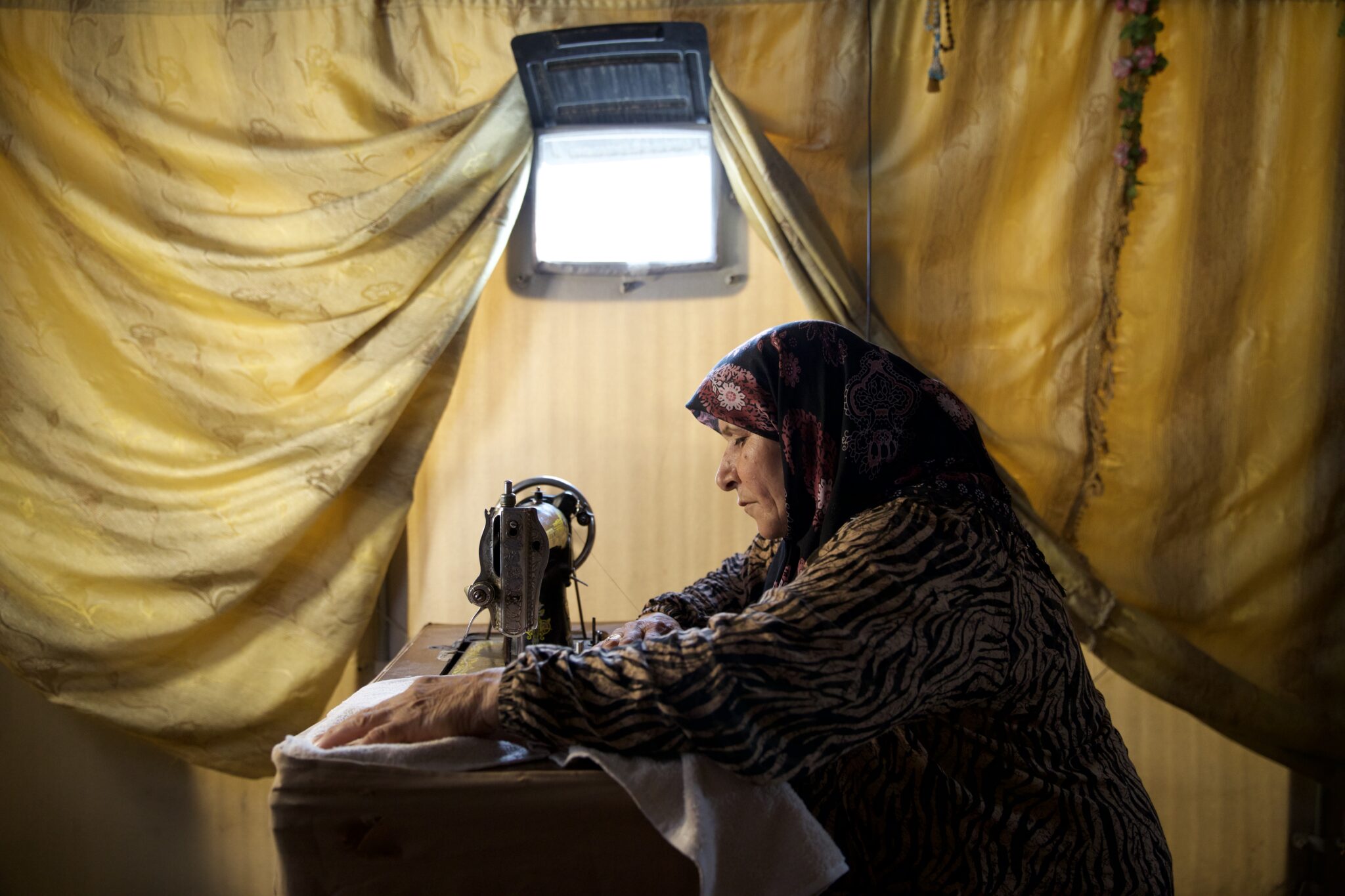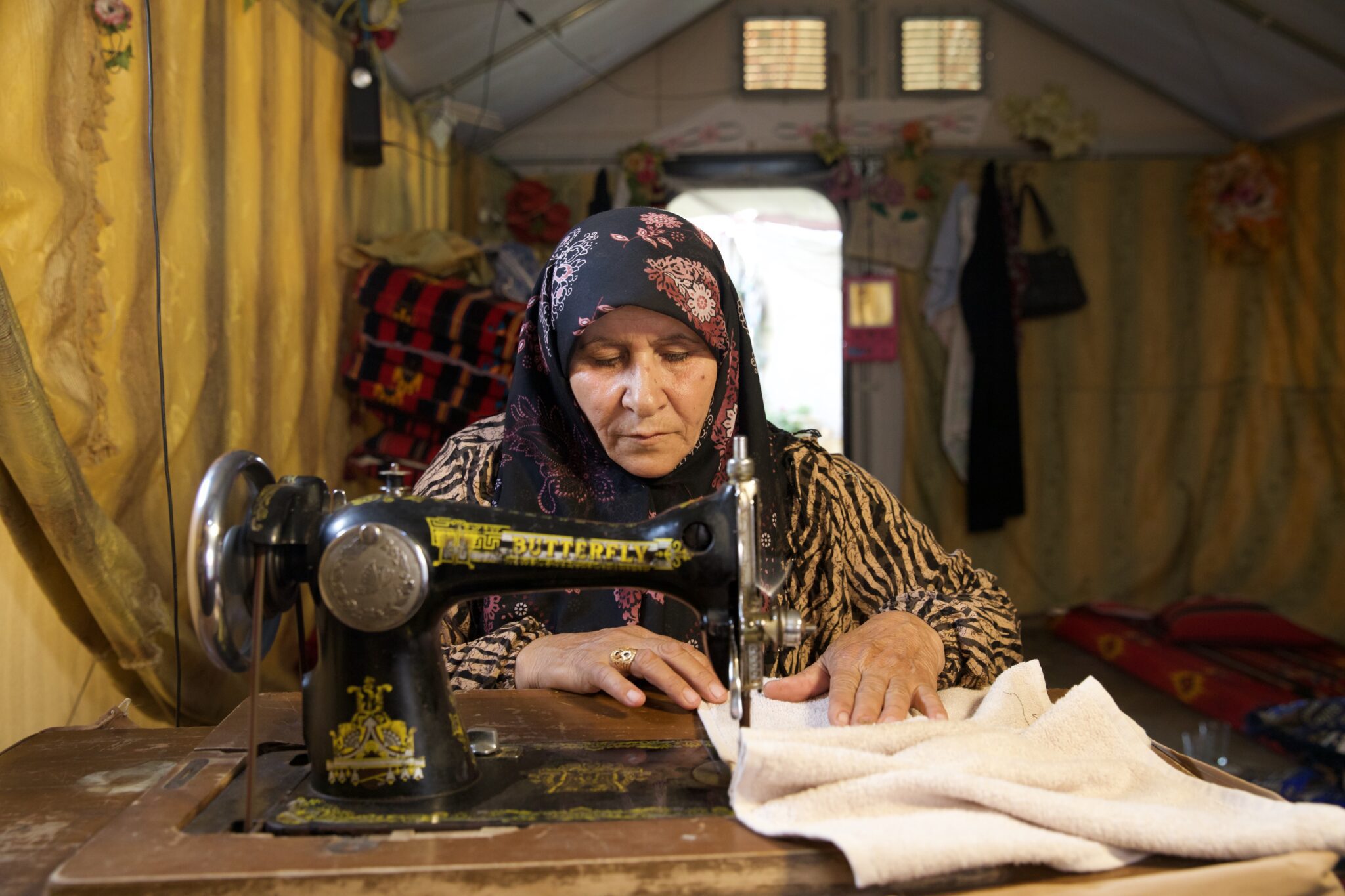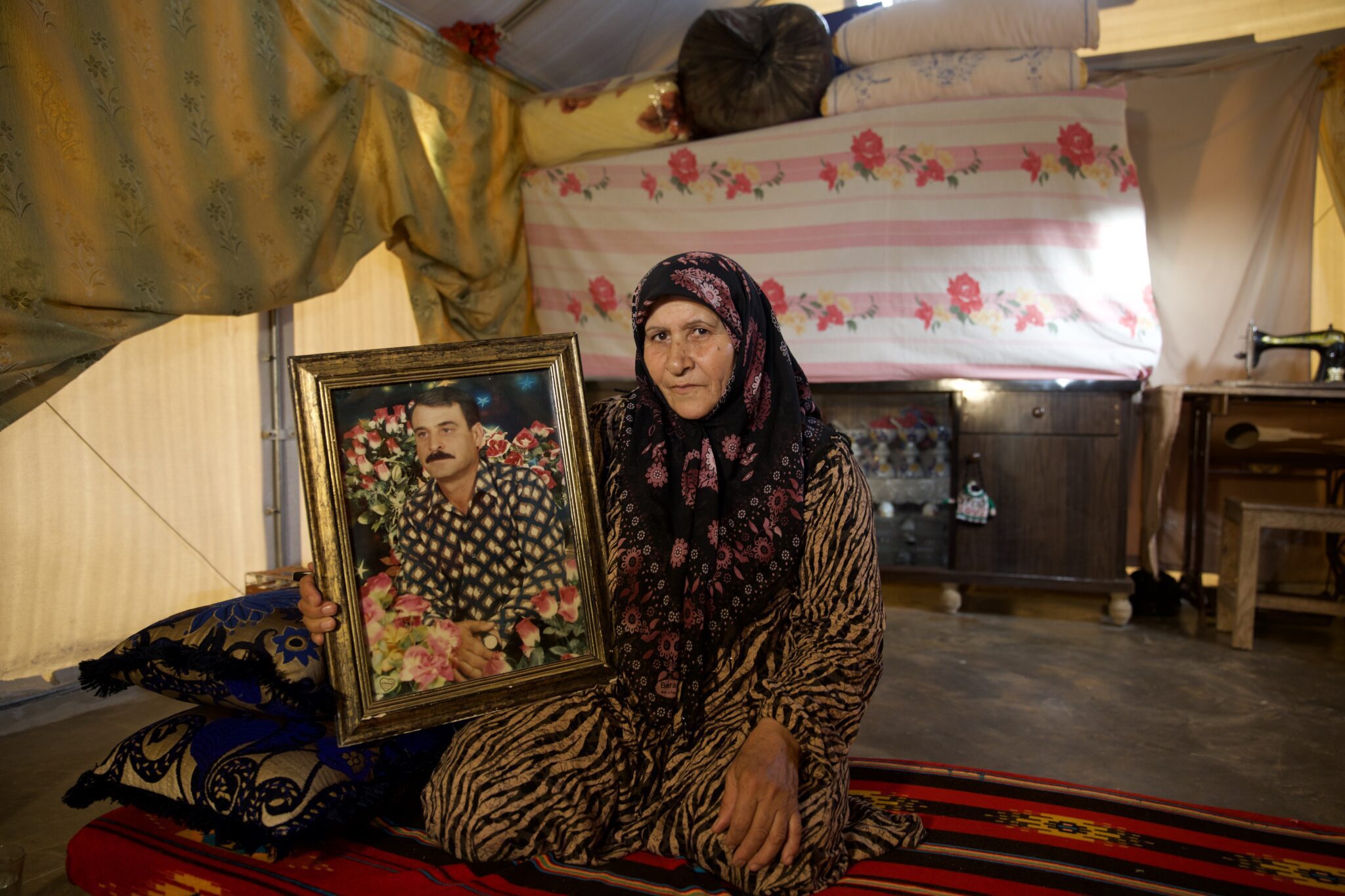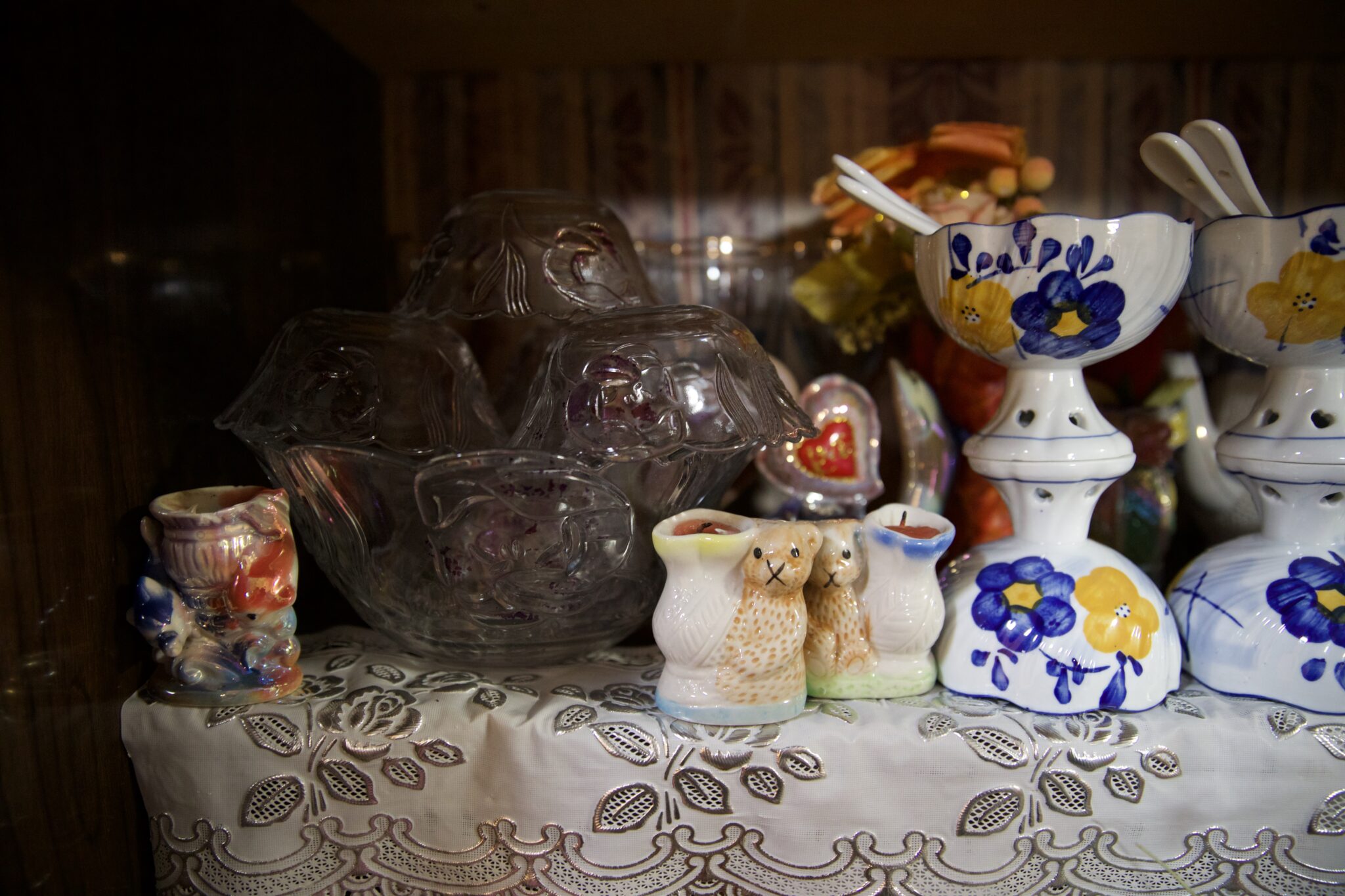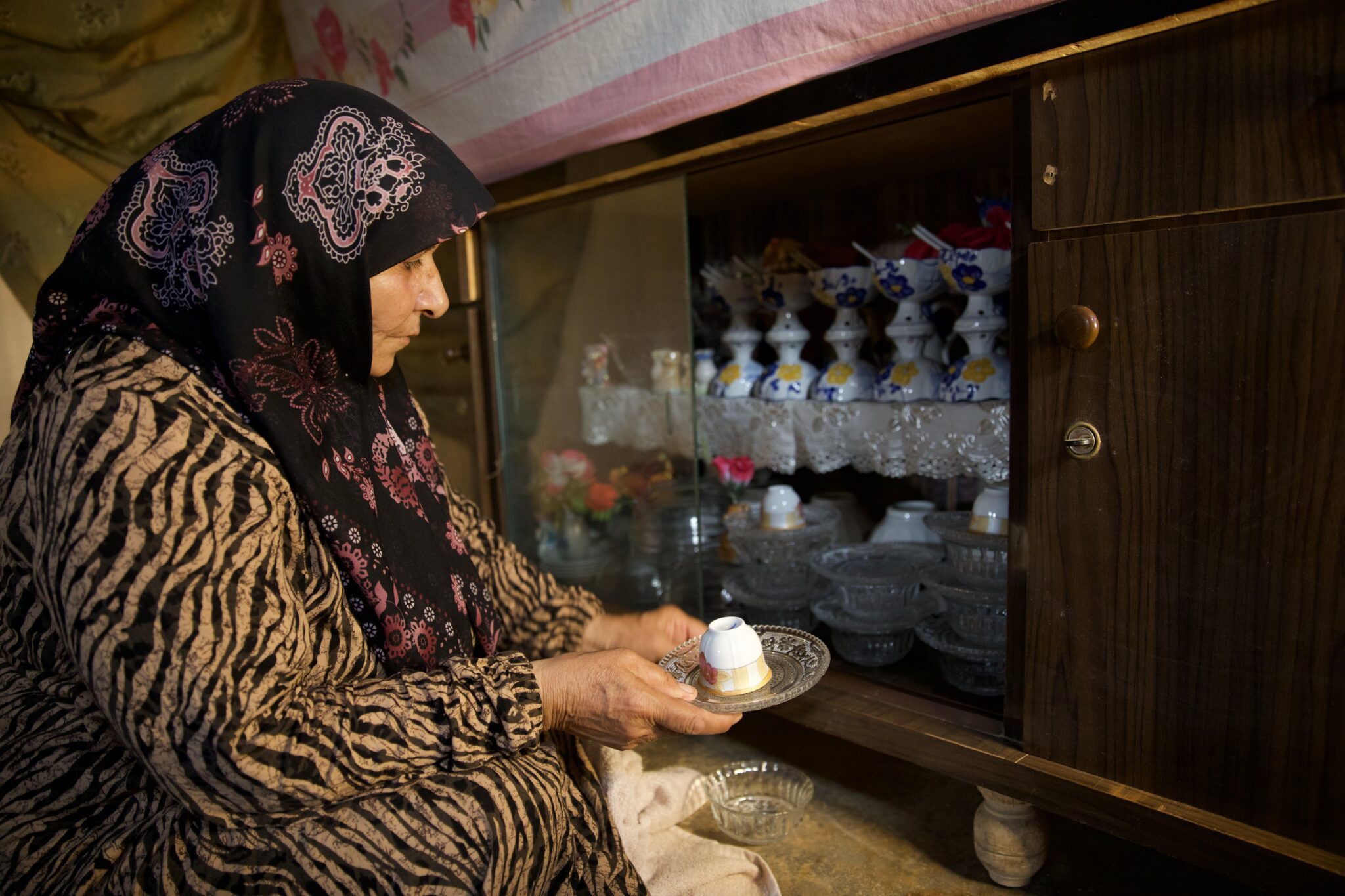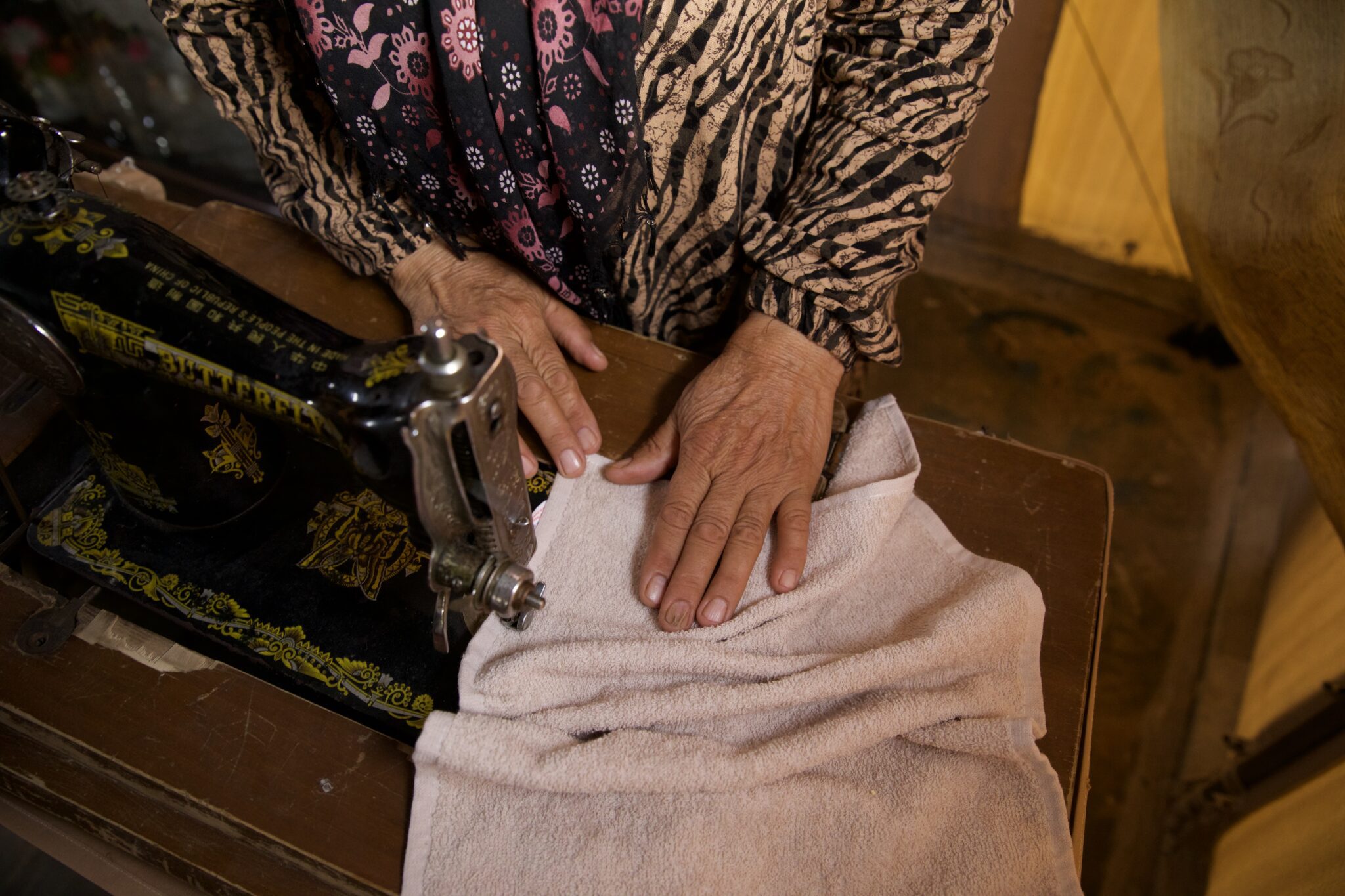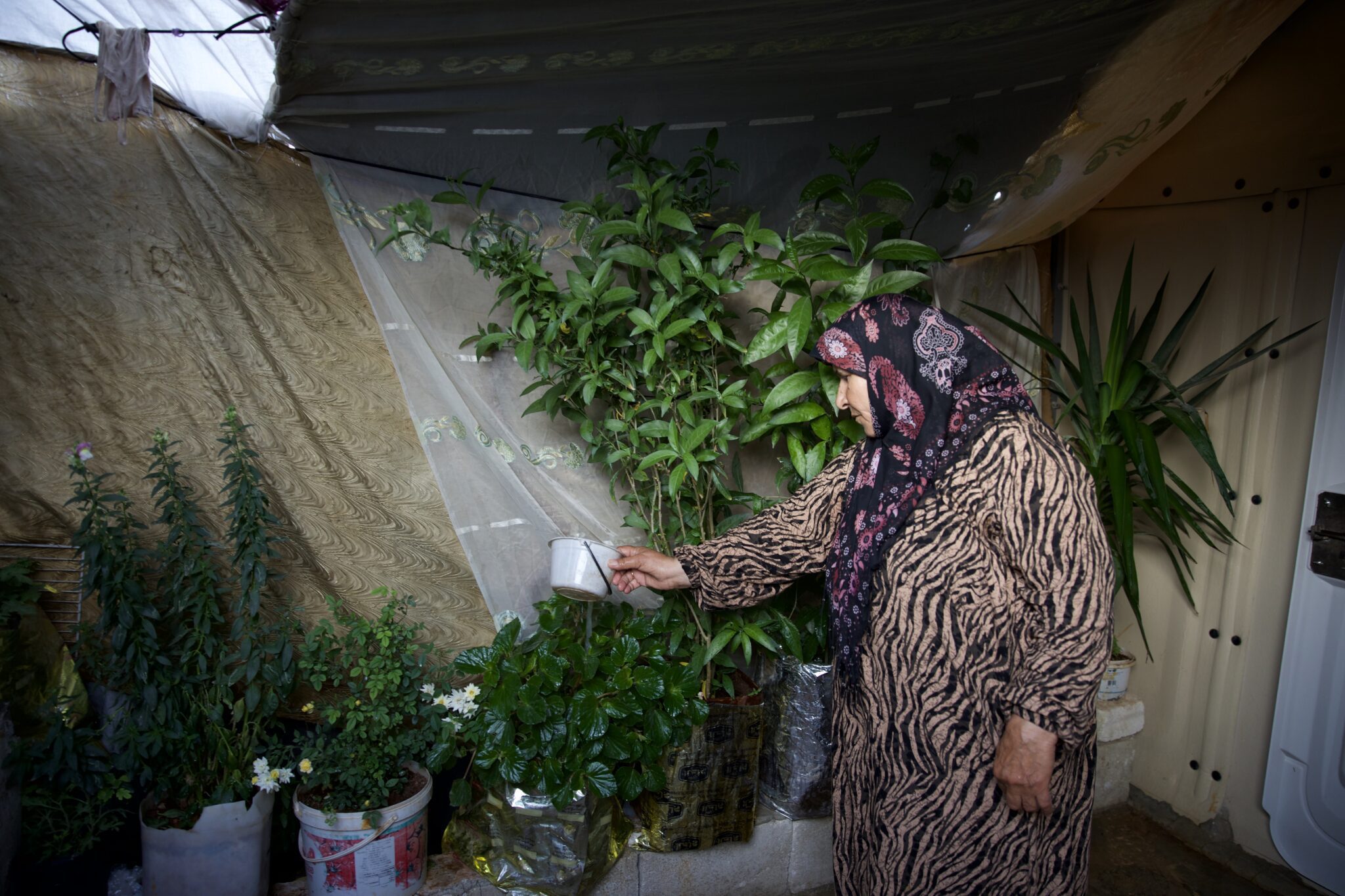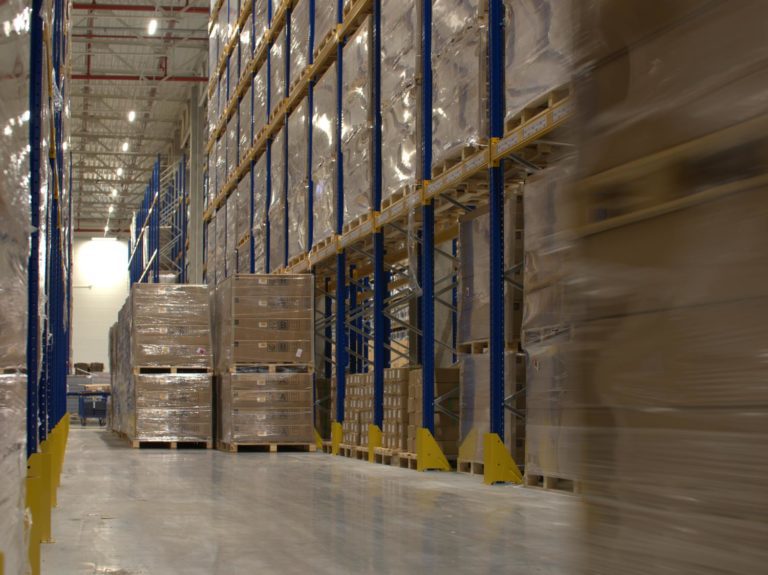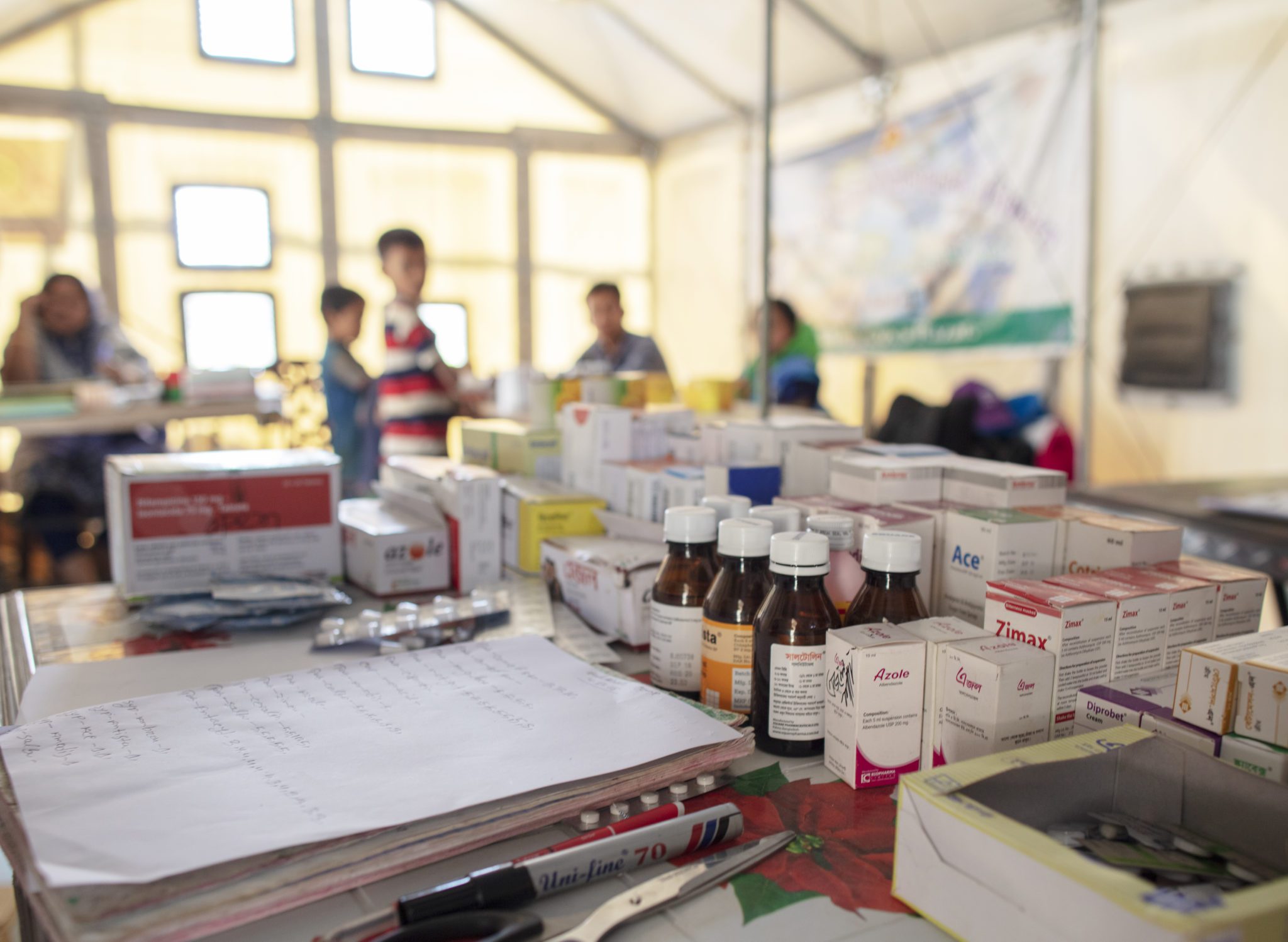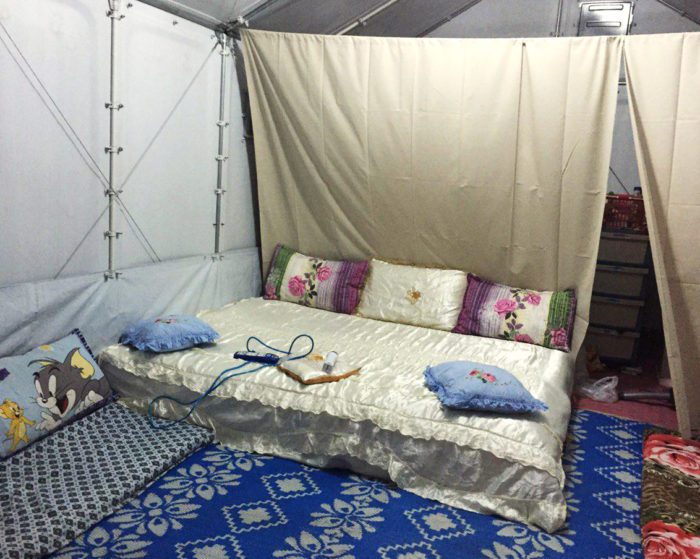In a camp on the outskirts of Killi in northwest Syria, where rows of temporary shelters stand under the sun, Fawzia, 60, keeps her home in order. Her shelter reminds her of the one she lost.
“When I was collecting my things, I was crying,” she says, remembering the day she had to flee her village in Idlib’s southern countryside five years ago. She brought only a few things; a kitchen cabinet, some ceramic and glassware, and her old sewing machine.
“Home is a piece of the heart.
It’s pride.
It’s everything.“
Fawzia
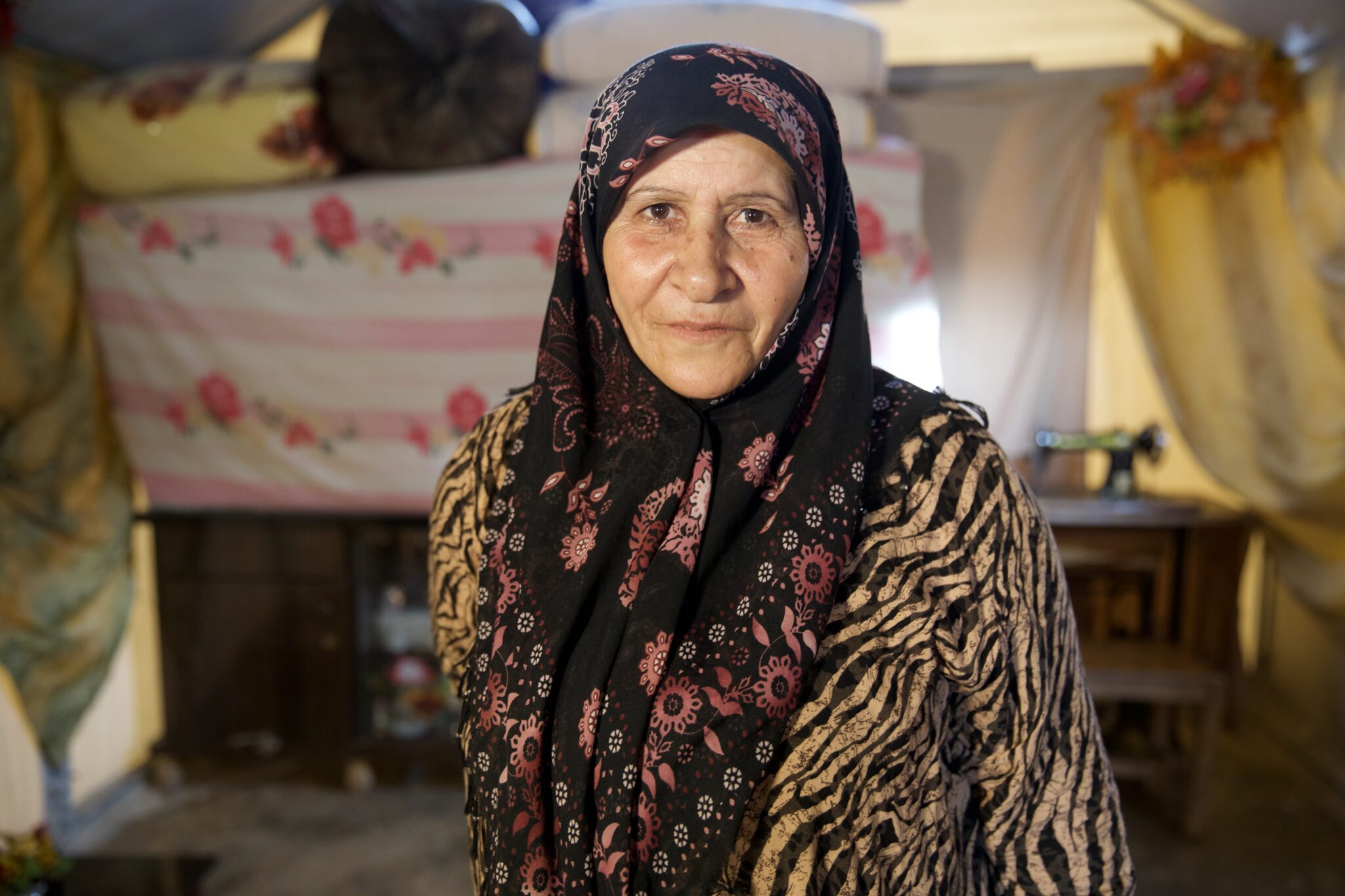
The first year was the hardest. Her family moved several times before settling in a tent. Wind and rain tore at the thin fabric, and their future was uncertain.
Today, she lives with her son, daughter-in-law, and four granddaughters in a shelter from Better Shelter. Inside, she has made the space her own: curtains along the walls, flowers, and rosaries adding colour and familiarity.
Her wooden cabinet with glass doors is her favourite object. Adorned with delicate utensils, it reminds of the traditions of Syria’s old homes, where mothers care for their kitchens and children learn respect.
Her old sewing machine sits beside a photo of her late husband. It once stitched dresses for her daughters. Today, it stands as a connection to her past.
She lost one of her sons in the war but keeps a plant he once gave her, now the centre of a small garden she tends beside the shelter.
“These are not just things,” Fawzia says of the cabinet and sewing machine. “They remind me of our home, and of its owner.”
She hopes one day to return to her garden, her house, and her family gathered once again among the fruit trees.
This story was collected before the war in Syria came to an end in December 2024, when the Assad regime fell and major hostilities subsided. Despite this shift, living conditions in the northwest remain extremely difficult. The region still hosts close to two million displaced people, many residing in camps or informal settlements. According to OCHA, more than 1.2 million people have returned to their areas of origin since late 2024, though most have found their homes damaged or destroyed, and essential services such as water, electricity, healthcare, and education remain severely limited. Livelihood opportunities are scarce, and the cost of reconstruction is beyond the reach of many households. The humanitarian situation therefore remains critical, with large parts of the population still reliant on aid for survival.
Video: Syria, 2024
© Ali Haj Suleiman

